Sushi, a cornerstone of Japanese cuisine, has evolved significantly across different regions of Japan, each developing unique styles and techniques. While the core principles – rice, vinegar, and fresh ingredients – remain, the specific choices of seafood and presentation dramatically alter the final product. These regional variations aren’t merely aesthetic; they’re deeply rooted in local availability, historical influences, and the chefs’ individual philosophies. Understanding these differences unlocks a deeper appreciation for the complexity and artistry of sushi.
This exploration will delve into three prominent sushi styles: Hokkaido, Kansai, and Tokyo. We’ll examine how their unique environments and culinary traditions have shaped their approach to utilizing the available ingredients, ultimately resulting in distinct and recognizable sushi experiences. The journey will highlight the fascinating interplay between geography, culture, and culinary innovation.
Hokkaido’s Abundant Seafood
Hokkaido, located in northern Japan, boasts a unique advantage: unparalleled access to incredibly fresh and diverse seafood. The cold waters of the Sea of Okhotsk and the Japan Sea provide a constant supply of prized ingredients like uni (sea urchin), ikura (salmon roe), kani (crab), and various types of fish. These ingredients are considered the absolute pinnacle of sushi quality, and Hokkaido sushi chefs prioritize showcasing their natural flavors with minimal processing.
Unlike many other regions, Hokkaido sushi often emphasizes raw, unadorned pieces. The focus isn't on intricate rolling or elaborate garnishes, but on the pure taste of the seafood. The chefs are masters of presentation, utilizing simple arrangements to highlight the quality and freshness of their selection. A single, perfectly prepared piece of uni or a glistening mound of ikura speaks volumes about the region's bounty. The dishes are typically larger, reflecting the abundance available.
The style leans heavily towards niban-zushi, which utilizes shorter rice sticks and larger pieces of fish. This method allows the natural flavors of the seafood to truly shine, showcasing the exceptional quality that Hokkaido's waters provide. It’s a culinary expression directly mirroring the region’s natural resources and a testament to a sustainable approach to seafood utilization.
Kansai’s Emphasis on Balance & Variety
Kansai, encompassing Osaka, Kyoto, and Kobe, presents a distinct contrast to Hokkaido’s singular focus. Here, sushi is known for its diversity and textural complexity. The region’s traditional cuisine, kaiseki, has heavily influenced Kansai sushi, encouraging a wider array of ingredients and skillful combinations. You’ll find a broader range of fish species alongside vegetables and seasonings.
Kansai sushi frequently incorporates ingredients like yuzu (a citrus fruit), shiso (perilla leaf), and umeboshi (pickled plum), adding layers of flavor and aroma. The use of shime-saba (freshly cured mackerel) is particularly prevalent, a testament to the region’s history of preserved foods. Furthermore, it's common to see variations in rice preparation, experimenting with different vinegar ratios and additions to complement the seafood.
The presentation in Kansai sushi also differs. While still emphasizing beauty, it’s often more elaborate than Hokkaido’s, utilizing a wider palette of colors and textures. The concept of “harmony” – wa – is central to Kansai cuisine, and the sushi is arranged to create a visually balanced and pleasing composition.
Tokyo’s Precise Technique & Refinement
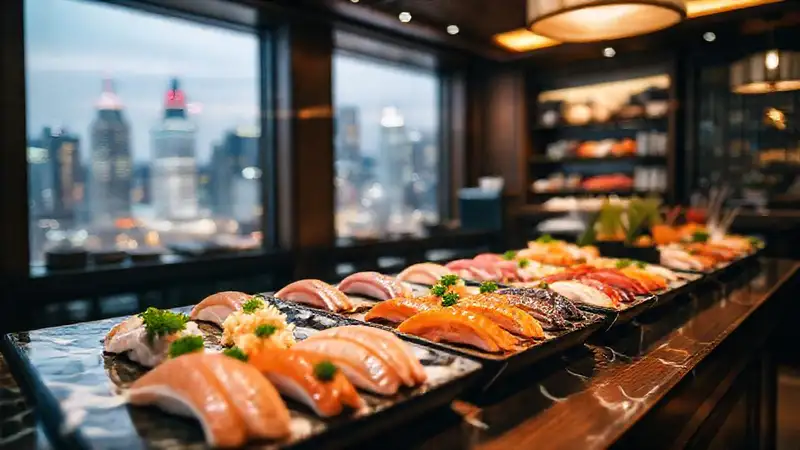
Tokyo sushi, particularly in the form of Edomae sushi, is renowned for its incredibly precise technique and commitment to tradition. Edomae sushi, originating in Edo (now Tokyo), was born out of necessity during the Edo period, where fishermen needed to preserve their catch, leading to techniques like curing and pickling. This influenced the evolution of the style.
Tokyo sushi chefs are highly disciplined and meticulously train for years to master the art of pressing ( oshi) the rice, controlling the temperature, and expertly slicing the fish. The knife skills are legendary, demanding a delicate touch to achieve the perfect balance between firmness and tenderness. The goal is a seamless connection between the rice and the fish, delivering an unparalleled sensory experience.
The presentation in Tokyo sushi is elegant and minimalist, with a strong emphasis on cleanliness and clarity. The focus is always on showcasing the natural beauty of the ingredients, highlighting the chef's expertise and respect for the seafood. You’ll find a restrained use of garnishes, allowing the flavors of the fish to take center stage.
Rice as the Foundation
It’s crucial to recognize that the rice itself is the heart of all sushi styles, but its preparation varies significantly. In Hokkaido, the rice is often cooked simply with minimal seasoning, allowing the seafood to dominate. In Kansai, the rice might be seasoned with a more complex blend of vinegar and other ingredients to complement the chosen fish. And in Tokyo, the rice preparation is rigorously controlled, with every detail – temperature, moisture, and vinegar ratio – meticulously adjusted to create the perfect foundation for the sushi.
The subtle differences in rice preparation contribute to the overall character of each region’s sushi. It’s not just about what’s on top; it’s about the foundation upon which the entire dish is built, creating a harmonious and unforgettable experience.
Conclusion
In essence, each of these regional sushi styles – Hokkaido, Kansai, and Tokyo – represents a unique reflection of its environment and cultural heritage. They demonstrate that sushi is not a monolithic entity but a remarkably adaptable culinary tradition. The consistent thread uniting them, however, is a deep respect for fresh, high-quality ingredients and a dedication to achieving optimal flavor and texture.
Exploring these distinct approaches provides a richer understanding of Japanese cuisine as a whole, moving beyond a simple "sushi" label to appreciate the nuanced artistry and regional diversity inherent in this beloved dish. Ultimately, appreciating the regional variations elevates sushi from a meal to a journey through Japan’s captivating culinary landscape.
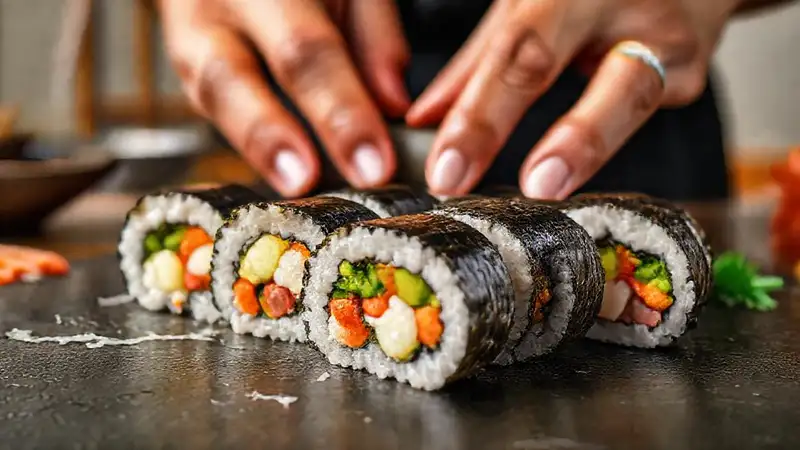 What’s the role of nori seaweed in maki rolls
What’s the role of nori seaweed in maki rolls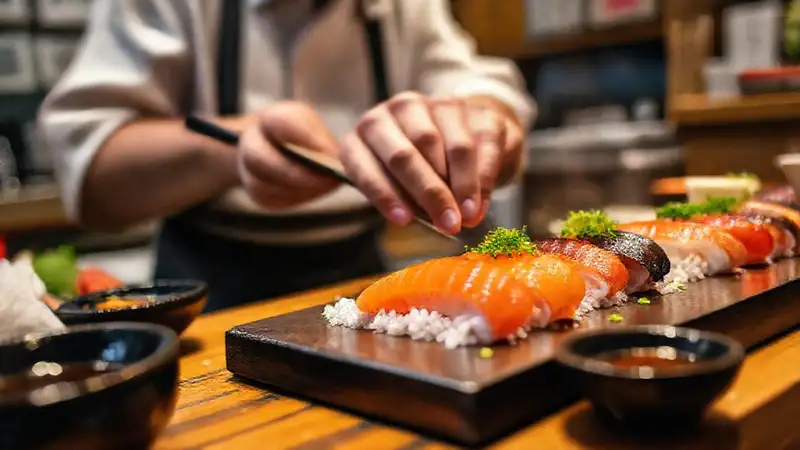 Can you detail Tokyo's nigiri rice preparation
Can you detail Tokyo's nigiri rice preparation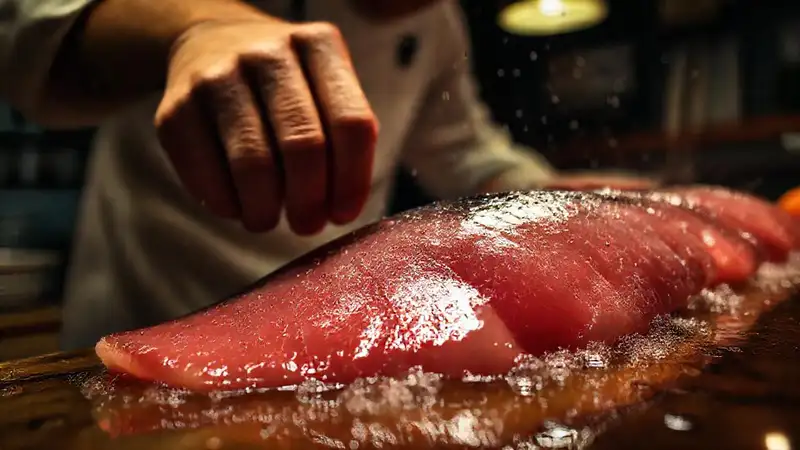 What makes Tokyo’s otoro sushi so prized, truly
What makes Tokyo’s otoro sushi so prized, truly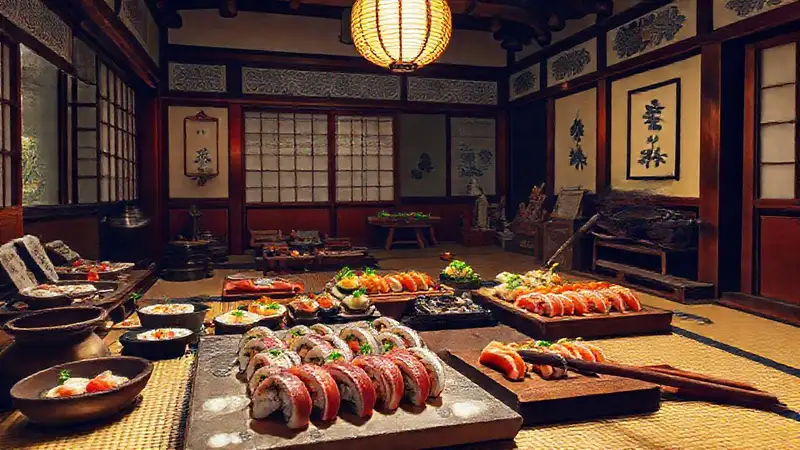 How does Kansai’s art influence the sushi’s appearance
How does Kansai’s art influence the sushi’s appearance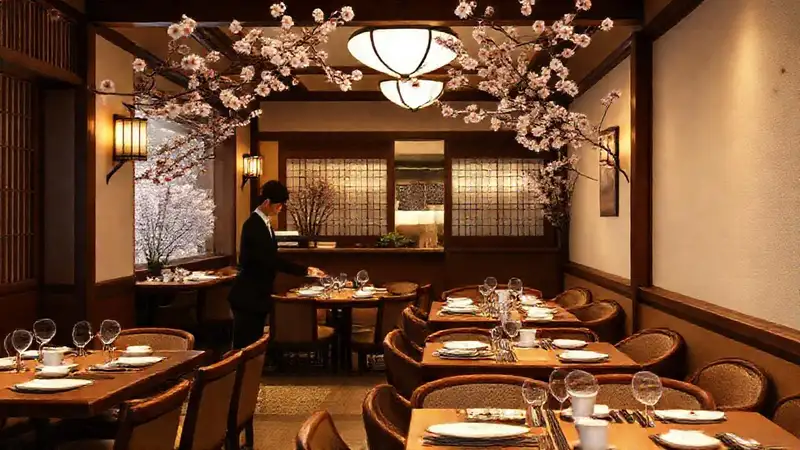 How does Kansai’s emphasis on etiquette affect service
How does Kansai’s emphasis on etiquette affect service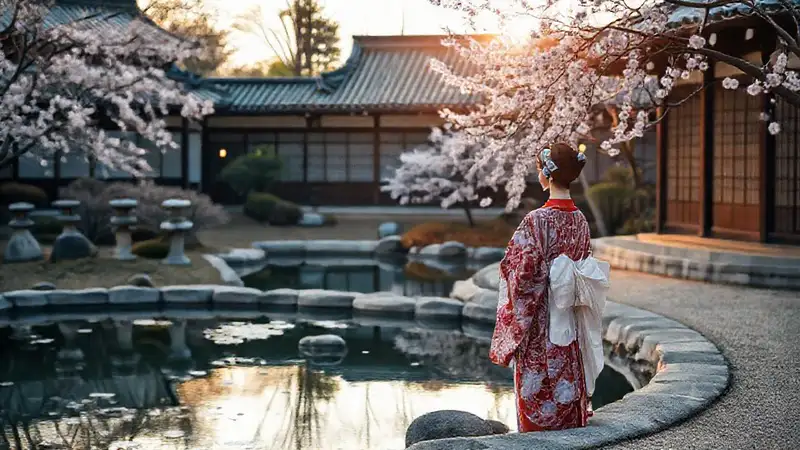 How does Kansai’s presentation prioritize beauty
How does Kansai’s presentation prioritize beauty How does Hokkaido's mountainous terrain impact seafood
How does Hokkaido's mountainous terrain impact seafood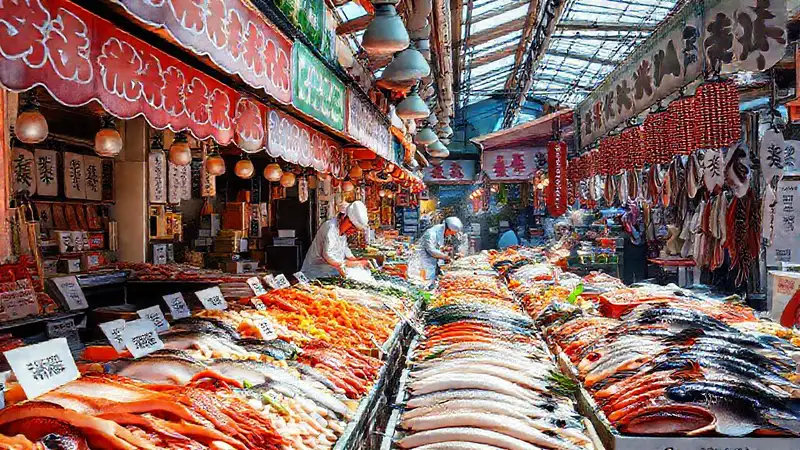
Deja una respuesta